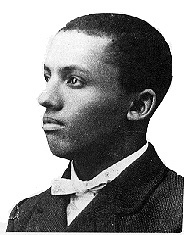February will have a fire hose of Carter G. Woodson’s Mis-Education of the Negro posts, so I’m sneaking in one Washington Sanitary Improvement Company post today and maybe another near the end of the month.
There are so many lots owned by trustees of WSIC. So who was a trustee? Let’s look at George M. Kober’s book The history and development of the housing movement in the city of Washington, D.C. From page 26 the elected directors were: David J. Brewer, Charles C. Cole, John W. Foster, Charles J. Bell, George Truesdell, Gardiner G. Hubbard, Anthony Pollok, Walter Wyman, Henry F. Blount, Mrs. George Westinghouse, Crosby S. Noyes, George H. Harries, William J. Boardman, William C. Woodward, Augustus S. Worthington, Henry Y. Satterlee, George L. Andrews, Bernard T. Janney, Mrs. Clara G. Addison, William C. Whittemore, G. Lloyd Magruder, Joseph C. Breckinridge, Marcus Baker, Katherine Hosmer, Charles E. Foster, Simon Wolf, George M. Sternberg, S. Walter Woodward, George M. Kober, and John Joy Edson. The executive board was George M. Sternberg, as president; S. Walter Woodward, John Joy Edson, Charles J. Bell, George Truesdell, George H. Harries, George L. Andrews, Ms. Katherine P. Hosmer; and Dr. Kober as secretary. Now let’s look at who owned property on Sq. 615, which was the first Truxton Circle block the company developed.
According to the General Assessment, just two of the above . Here we go:

Sternberg- 134, 135, 136, 137, 138, 139, 140, 170, 171, 172, 173, 174, 175, 176, 177, 178, 179, 195, 196, 197, 198, 199, 200, 201, 202, 203, 204, 205, 206, 207, 236, 237, 238, 239, 240, 241, 242, 243, 244, 245, 246, 247, 248, 249, 250, 251, 252, 253, 254, 255, 256, 258, 259, 260, 261, 262, 263, 264, 265.
Kober- 65 and 66
Looking at the Library of Congress page for the 1903 DC Baist map, Plate 39, Kober’s lots 65 and 66 are 24-26 Q St NW. Sternberg (for WSIC) had odd side 31-43 Bates St NW (lots 134-140), even side 46-60 Bates St NW (lots 170-179), even side 53-77 Bates St NW (lots 195-207), and 94 Bates St NW, odd side 15-29 Bates St NW, and even side 30-44 Bates St NW, odd side 45-51 Bates St NW, 12 Q St NW, and even side 62-76 Bates St NW (lots 236-265).
Check back towards the end of the month to look at WSIC’s Sq. 615 ownership in the 1920s and 1930s.





